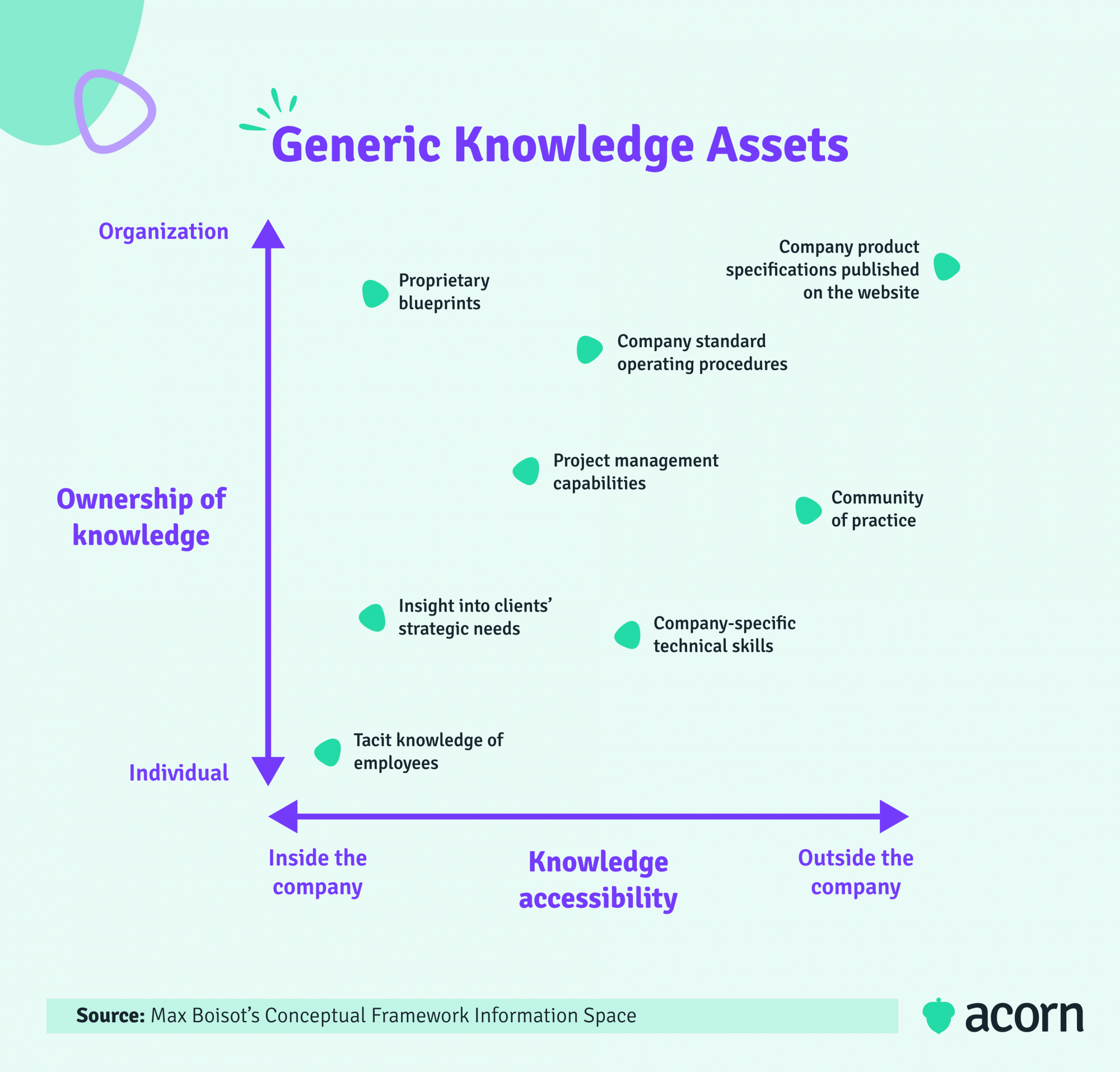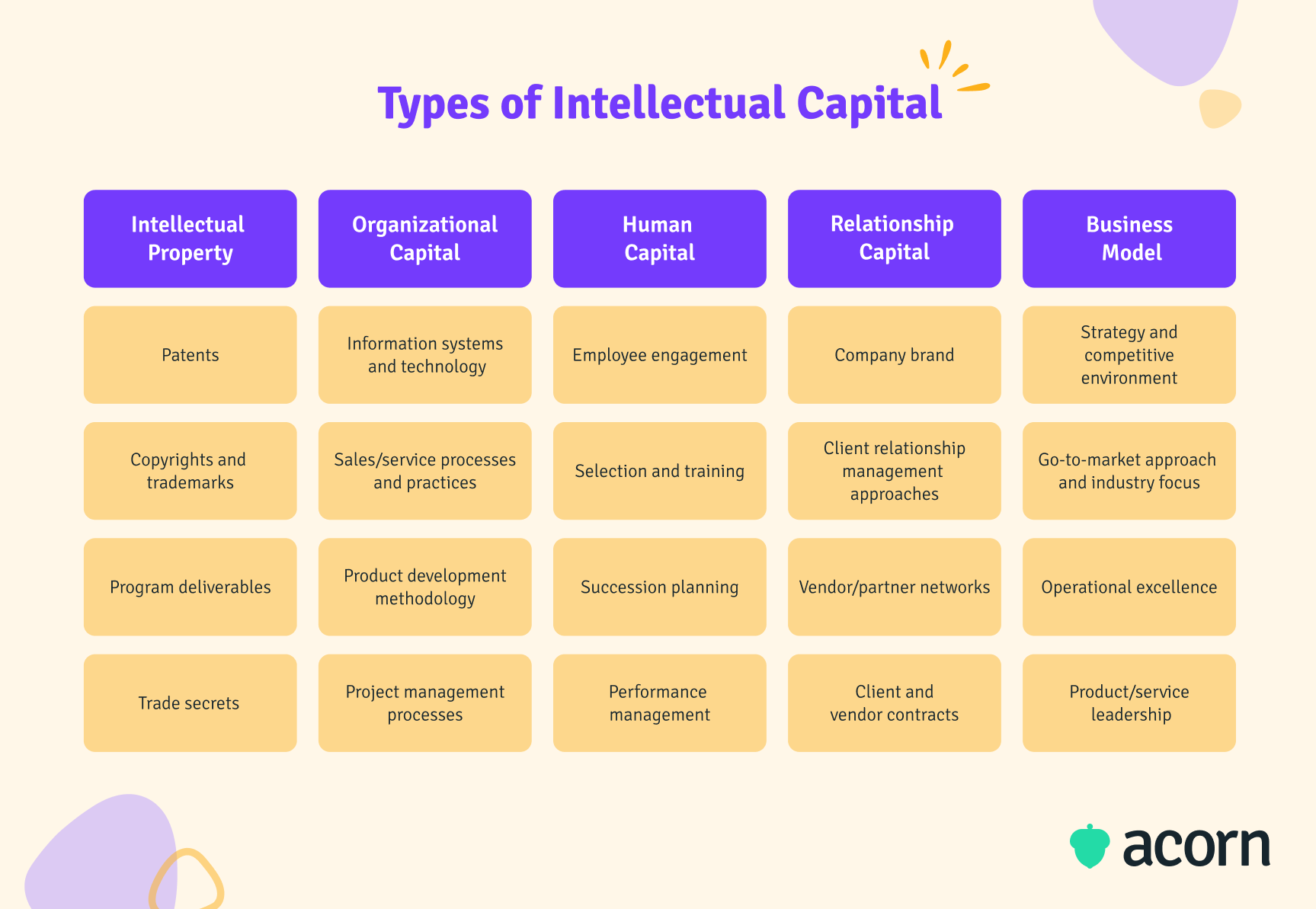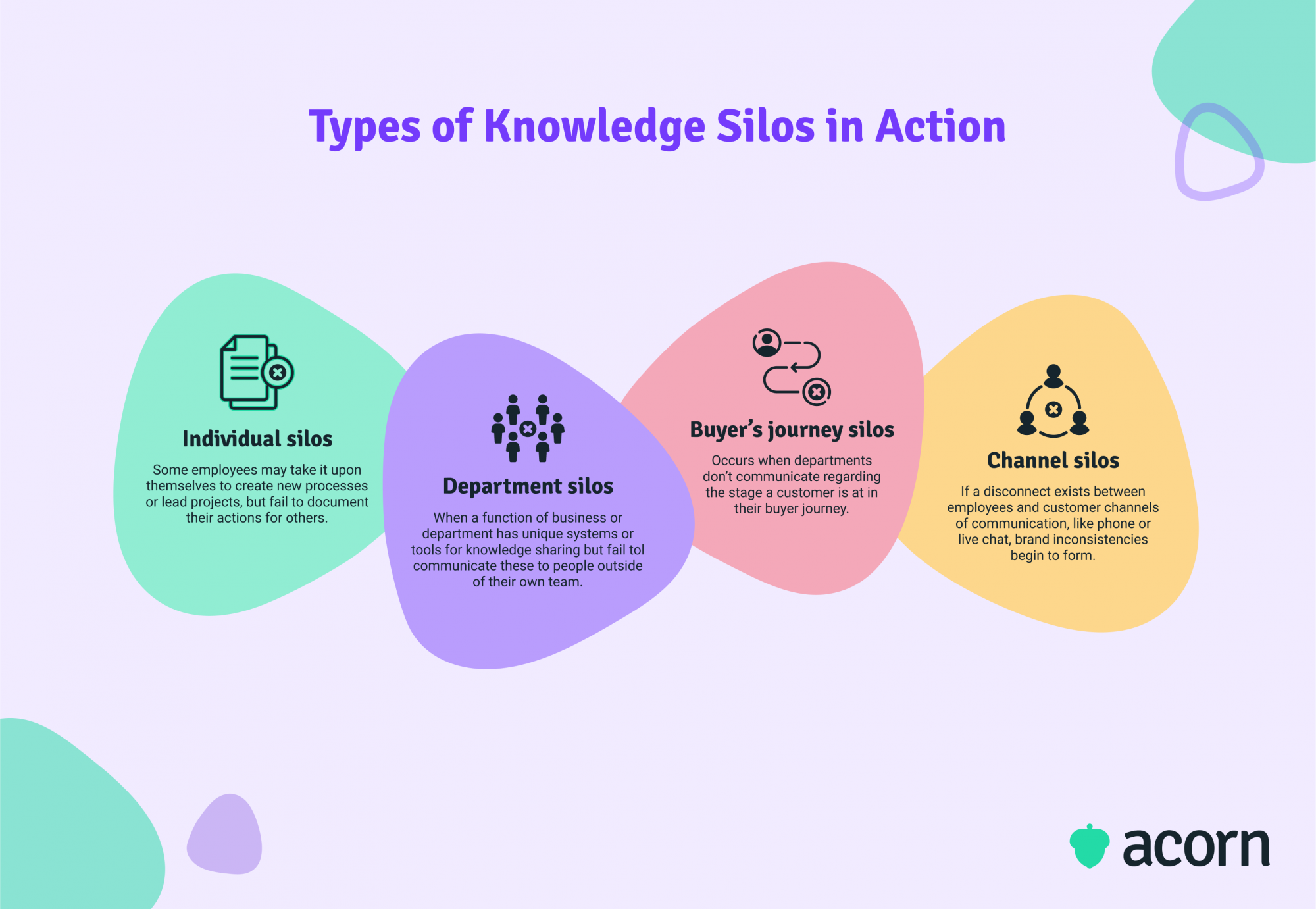Building Mission-Critical Knowledge in the Workplace
Reading Time:

Lead the pack with the latest in strategic L&D every month— straight to your inbox.
SubscribeYou have to give your employees the tools and mentors they need to drive business success.
They say the people make the organization. If true (we believe it), it tracks that whatever workplace knowledge they possess and how they utilize it is key to your growth engine.
But we’re getting ahead of ourselves. First, you need to build that knowledge. Second, create a knowledge-sharing culture. Third: World domination organizational success.
In this article, we’ll look at why workplace knowledge is so important, why you should be building it, and how to equip employees with the resources needed to build and share their knowledge in the workplace.
What is workplace knowledge?
Workplace knowledge is the sum of all business information, capabilities, expertise, and processes. Effective workplace knowledge provides a competitive advantage by reducing inefficiencies, encouraging collaboration, creating trust between employees and management, and making company knowledge readily available, accessible, and accurate.
Why you should be building and sharing employee knowledge
“To share an asset, usually it must first be divided. Knowledge is one of the few assets that multiplies as it is shared.”
Staying ahead of the curve is incredibly important as marketplaces become increasingly saturated. Consumers know they can go elsewhere. Employees know they can go elsewhere—which is a problem if they take certain information with them. Even if they stay, knowledge hoarding serves no one, your organization least of all.
There’s another catch-all in there, too. On the one hand, fragmented ownership of knowledge is a money pit. On the other, what employees don’t know, they can’t do.
So, building and facilitating knowledge sharing:
- Fosters innovation and enables it to be more easily executed.
- Improves decision-making.
- Decreases employee attrition and turnover.
- Builds better customer experiences through their proximity to best practices.
- Reduces loss of mission-critical information, particularly amongst geographically dispersed workforces.
- Creates opportunities to learn in the flow of work.
- Keeps your organization competitive, if not at the forefront of your industry.
Let’s talk about a few of the more crucial benefits.
Improve decision-making
If knowledge is the foundation your organization is built on, capabilities are the building blocks. Access to the right resources at key moments in time is critical for leaders when making decisions. This rings even more true when there is an excess of irrelevant data in front of them and they’re on a deadline.
Cross-cutting decisions that happen frequently and have the potential to shape the future of a business are one scenario where which timely, accurate business knowledge is needed. They are the culmination of smaller decisions taking place elsewhere—which means that siloed knowledge somewhere can have a ripple effect on mission-critical decisions. So, not only does it impact business outcomes to have good knowledge-sharing practices, but it powers the strength of leadership capabilities.
Build a collaborative culture
Knowledge sharing and retention depend, in large part, on culture. What’s done at the top trickles down and what’s done amongst a team is internalized by new hires. So, it’s important to ensure knowledge sharing is an underlying current in workplace culture, least of all to create a collaborative environment.
Collaboration, in the right doses, breeds productivity. The better people can informally share knowledge, tacit or otherwise, the more efficiently work gets done. This is key across remote work. It’s not just people that are scattered—information and resources are too, adding another layer of complexity to knowledge sharing and collaboration. Tacit and experiential knowledge, and all the critical insights gained from them, are neglected.
Knowledge bases that can be easily accessed create a repository of collective expertise. This has the added advantage of allowing for real-time course correction on misguided insights or incorrect information and helps reduce replication of effort.
Reduce attrition & turnover
There’s an abnormally high number of resignations in a post-pandemic world. The more resignations, the more knowledge and experience are lost if it’s not properly captured.
Research has found that regular knowledge sharing between sales staff reduced friction, increased productivity, and even increased sales by 15%. The effects of one “bout” of knowledge sharing (for example, discussions within a meeting) last five months. (Imagine if that information was recorded and stored, too.) Mistakes stemming from knowledge gaps can also be reduced, which in turn reduces attrition from employees who may feel like they’re flying blind.
For leaders, we know the risk of lost knowledge is factored into attrition rates. Turnover could never be at zero for the life of your business (people will always move on even on the best of terms, whether that’s to other opportunities or retirement), which is why you want a proactive process for knowledge succession.
Exit interviews and handover documentation are two ways to capture crucial job knowledge at an individual level. Performing these a couple of weeks before an incumbent plans to leave ensures that managers can also help transfer this information to successors. This can then be codified for future reference within an LMS induction program.
Consider prompts or questions like:
- Is there important at-risk knowledge that takes a long time for someone else to learn?
- What pieces of knowledge are you most worried about “slipping through the cracks” when you leave?
- How did you learn the thing you know? Were there any critical training programs, work assignments, etc.?
- What equipment do you need to test, maintain, or repair? How would you prioritize learning each of those?
Support learning in the flow of work
McKinsey found one in three surveyed organizations reported they lacked the systems to share learning among employees. The Harvard Business Review found that may be partially due to a perception that external experts are more valuable than expertise held internally. If you’re hiring bright, talented people, why not a) give them the chance to learn and b) impart that knowledge to others?
Day-to-day knowledge sharing (i.e. learning in the flow of work) is key for a couple of reasons.
- Peer-to-peer learning is an important factor of on-the-job training, which is in turn a hands-on method of imparting job-specific knowledge. This is low cost and requires minimal time compared to, say, group training programs that take employees away from their work.
- Employees who are encouraged to learn are more willing and able to meet their organization’s needs and objectives. They’re essentially better able to translate learnings into business value.
But most crucially, it means employees are afforded the faculties to take ownership of their own professional needs. In other words: You won’t have the workforce you need to meet your business objectives without learning in the flow of work, nor will your workforce even be fully aware of the skills their lacking.
How to share and build employee knowledge in the workplace
The channels through which knowledge flows in your organization should be easily accessible to all. The greater the barriers to entry, the less likely people will willingly share knowledge or document it accurately.
Ask yourself:
- How is knowledge discovered inside our organization?
- How is it stored?
- How can it be incorporated into our culture?
Then turn those answers into action steps.
- Codify touchpoints for discovery
- Create a single source repository
- Establish knowledge-sharing practices.
Define your touchpoints
There’ll be multiple sources of knowledge and multiple channels for it. You’ll want to figure out the crucial points it:
- Originates from (think job roles, teams, meetings)
- Moves through (meetings, projects, communication channels)
- Is stored in (tools, people, processes, culture).
This puts boundaries around your knowledge assets, making it a whole lot easier to define what is mission-critical. Note that job roles are defined sets of responsibilities, e.g. Head of Customer Support, whereas people are the individuals that perform those roles.
Remember you’re looking for knowledge that:
- Is sustainable and valuable
- Cannot be replaced just by hiring new employees
- Provides a competitive advantage
- Justifies the cost of training for and retaining it.
That could be (but is not limited to) customer data and insights, organizational culture, proprietary models, processes, and operations, subject matter expertise, project-specific information, or strategic relationships.

Organize information on a scale of how many people have a certain understanding of it against how easily accessible it is for those who don’t. For example, the nuances of a specific relationship held by a Partnership Manager may be low on your y- and x-axes, because they have cultivated this relationship informally without documenting it.
Be specific when identifying your knowledge and channels. Don’t just say “between managers and employees”. This should be a somewhat exact science: Define how, where, and what. Via messaging platforms? Through a learning management system (LMS)? During one-to-one meetings? Do employees routinely search for the same information about processes or industry? If so, why?
Figure out where your external channels are from there. Between your company and customers through marketing? Or specific support personnel and customers? Both? Neither?
It may seem like too many questions at first glance, but these will help you narrow down:
- Specific information customers seek from you
- Resources and/or information employees repeatedly turn to
- Processes or aspects of projects only one person can complete
- The places within your organization employees interact with the above.
All together, this gives you an idea of what’s valuable, sustainable, impossible to replicate, and powering everyday work. And that gives big data its value, justifying the cost of managing it.
Create a single source repository
All organizations accrue a vast amount of information and expertise, which is why it’s important to store and organize it in a structured manner. Good knowledge management assumes that it’ll be hard to pin down the ways in which things get done.
This can be as simple as standardizing writing and keeping electronic copies of routinely used documents and processes. Consider:
- User guides
- Case studies
- Recorded demonstrations
- Templates for everything from social media posts to handovers
- Training unique to your organization, e.g. onboarding
- Meeting minutes
- Support or key personnel contact information.
All of this can and should live in knowledge-sharing tools already used by employees. That could be collaboration platforms (Teams or Slack), digital share points (Google Drive or, literally, SharePoint), or your learning management system. The advantage here is that you’re not introducing something new or complicated to their work lives, but making better use of an existing tool.
If you’re working with a knowledge library built to support everyday performance, then new knowledge should be easily accessible. In layman’s terms: if you’re using an LMS, don’t just make one big content library and call it a day. Guided development plans make it easier for a team member to find information immediately relevant to them. Bonus points if you have a system that utilizes content mapping, so you can match information to the specific capabilities of job roles, too.
This means critical knowledge isn’t necessarily bound to the workplace. That promotes knowledge sharing between remote workers or those working flexible hours with small windows of crossover with peers.
Establish knowledge-sharing practices
That’s explicit knowledge covered. What about tacit knowledge, we hear you ask? It can be hard to lock down lived experience, but codifying starts by embedding knowledge sharing as a practice in your culture.
Some say that knowledge needs to be shared because all knowledge is created and built from existing knowledge. (That’s a lot of knowledge in a sentence. Talk about word of the day.) Research has also shown that perceptions of ownership impact willingness to share know-how. If employees believe they have the right to wield their knowledge as they choose, they may only share it if they gain personal benefits in return. On the other hand, if they see what they know as contributing to the greater (intellectual capital) goals of their organization, they are likely to treat their knowledge as an asset that is meant to be shared.
A big part of fostering a culture like the latter is creating an environment in which people feel psychologically safe to share ideas and information, both implicitly and explicitly.
In this way, you could say the act of knowledge sharing has two purposes:
- Creating space for social learning between employees; and
- Having subject matter experts routinely teach others.

Employee knowledge sharing
This isn’t just about physical space, but rather creating an environment in which people are willing to turn to others for help—not just their “superiors”. It’s important to establish channels for collaboration everywhere, especially when it comes to remote work. Consider:
- Lunch and learn events, where employees can present to or train their coworkers on topics relating to their role. It’s an easy way to encourage cross-team collaboration.
- Frequent team collaboration, like weekly meetings, where employees are encouraged to discuss any learnings from the week as well as what projects they are working on. If teams are remote, make sure it’s a regular calendar invite.
- In-office, create spaces where employees can congregate away from their desks. Over time, they’ll start to associate social learning with those breakout spaces.
- Re-examine onboarding. This is the first point where employees can pass key business acumen along. Standardized documentation or buddy programs are a good place to start.
You have to create the intention for people to intentionally learn from one another. Recognize and reward employees who share their own knowledge—not just institutional, but lived. It’ll encourage employees to make knowledge-sharing part of the company culture.
Expert knowledge sharing
People are wired to follow the leader, either with the overt intention of attaining their success or the subconscious desire to take on their attributes. Ergo, create practices for senior leaders to promote knowledge sharing. It’s key for something knowledge cascades, i.e. how know-how moves from one expert through multiple employees in an organization.
Subject matter experts possess deep smarts, which enables them to see the complete picture while zooming in on minute problems others may miss. This isn’t beyond others’ ability to learn; a knowledge cascade allows this thought leadership to be disseminated throughout your workforce. Said cascades also create knowledge trees, whereby each tier of employees becomes a teacher to the next. Sounds cool, right?
Mentorships, job shadowing and, again, lunch and learns are all easily implemented ways to encourage a top-down approach to knowledge sharing. Even in flatter structures, cross-department collaboration is important for avoiding knowledge silos, particularly if individual contributors have the chance to work with other department leads or those perceived to hold more expertise.
The pitfalls of not establishing knowledge-sharing systems
In its purest form, knowledge is defined as an understanding of information and skills acquired through experience, perception, and education. In the workplace, this is the foundation of your organization.
It’s easier to break it down into two complementary entities: Workplace knowledge and the systems that manage it.
- Workplace knowledge is an invisible lifeline in your organization. It’s the familiarity, experiences, techniques, awareness, and ability to problem solve that all effective employees possess.
- Knowledge management is the process of defining, sharing, and storing the knowledge and experiences of employees within your organization. It ensures employees can access the information they need at any time.
There is a school of thought that competitive advantage is solely rooted in talented employees and the systems that empower them. Talented employees, or knowledge workers, are those key people who create valuable but often intangible assets, storing the how-to in their heads.
The problems form when that knowledge stays in their heads. Knowledge silos not only isolate information but also create tunnel vision in teams or individuals, preventing them from seeing how they are part of a bigger picture. They are dangerously common in organizations where cross-team collaboration is non-existent. That is any combination of the following.
- Different departments with different agendas (i.e. common goals do not exist)
- Departments not understanding what other areas are responsible for (or the value they create)
- Legacy technology or processes preventing collaboration
- Teams relying on different knowledge management tools
- Information hoarded by individuals within teams.
On that last point, it’s not just about selfishly hoarding valuable knowledge. Employees may simply believe they are too busy to document information, or that they are the only person in close enough proximity to a project to need to understand it.
Take a developer who’s been working alone on a small feature for a year. Without a helping hand, they grow resentful and eventually leave the organization for a role they believe will offer more recognition and resources. They take with them the only source of information on how to service the feature, and by the time anyone realizes this, the developer is beginning to either utilize or forget that knowledge in their new role. This new role is also keeping them busy, and given they hold little loyalty to their former employer, they’re probably not going to spend time writing documentation (note: this speaks to a bad offboarding process).

So, essentially, workplace knowledge is important because it enables employees to do their jobs effectively—and facilitating the sharing of that knowledge (while avoiding silos) ensures your workforce have equal access to the information they need to do their jobs. It’s a cycle, but it needn’t be vicious.
Key takeaways
Benjamin Franklin said an investment in knowledge pays the best interest. Building, capturing, and storing it—so it can be continually updated and used—is how you’ll get the best business returns.
It’s not just about knowledge itself, but the systems you use to support knowledge sharing. A culture to encourage knowledge sharing, channels to funnel it, and an internal knowledge base to store it accurately are all key.
If in doubt, ask:
- How it knowledge sought and found in our organization?
- How do we store knowledge?
- How do we make knowledge sharing intrinsic?
If you do that right, you get:
- Better efficiency in achieving business goals
- Faster decision-making capabilities in all employees
- Decreased employee attrition & turnover (plus ways to mitigate any knowledge loss because of these long-term)
- Industry-leading customer experiences
- Easy access to key information for remote workers
- A competitive advantage stemming from innovation and faster internal processes.